
How to Improve Operational Efficiency in 5 Easy Steps
In today's competitive business climate, operational efficiency is your company’s secret weapon to reduce costs and improve results. The faster your company moves, the more agile you are - the better. Measuring and improving operational efficiency can help increase profitability and long-term growth.
Executive Summary:
In today's competitive business climate, operational efficiency is your company’s secret weapon to reduce costs and improve results. The faster your company moves, the more agile you are - the better. Measuring and improving operational efficiency can help increase profitability and long-term growth.
Whether you’re from a small business or an established company a manager, or an employee, understanding and improving operational efficiency can help you and your team succeed. This article will explore the definitions and benefits of operational efficiency, provide tips on how to improve it, and outline some of the keyways to boost operational efficiency with minimal effort.
So, let’s dive in and get started with improving operational efficiency.
What is Operational Efficiency
Operational efficiency is the effectiveness and resourcefulness with which a company or organization produces goods or services. It is a measure of how well a company is utilizing its people, equipment, and processes, to produce a desired output. In short – it’s how well your company does what it does.
Operational efficiency is often used to assess how well a company’s internal operations, supply chain, and distribution systems are functioning together as an overarching system. High operational efficiency often means better overall business performance and can significantly impact profitability and competitiveness.
To be operationally efficient, a company must:
- Be able to produce goods or services at the highest possible levels Minimize waste and roadblocks
- Streamline processes to maximize resource use
- Continuously improve by adapting to evolving business conditions.
Operational efficiency is often evaluated using metrics such as cost per unit, cycle time, and output per unit of input. By improving these key metrics, businesses can boost their operational efficiency and lower their costs, resulting in improved profitability and competitiveness.
Why Operational Efficiency is Important
Operational efficiency ensures your organization can produce its desired output using the least number of resources possible. Operational efficiency is important because it saves money, increases productivity, and improves customer satisfaction.
So, let’s look at the most prevalent reasons why operational efficiency is necessary:
Cost Savings
By streamlining processes and minimizing mistakes, organizations can make better use of their resources and stop spending on resources and procedures that aren’t providing a favorable return.
Increased Productivity
By identifying and eliminating bottlenecks and inefficiencies, organizations can increase the speed and output of their operations, leading to higher productivity.
Improved Customer Satisfaction
By reducing wait times and errors, organizations can improve the customer experience and increase customer satisfaction. Implementing customer relationship automation can further enhance the customer experience and increase customer satisfaction by providing personalized and timely interactions.
Competitive Advantage
Organizations that operate efficiently can offer lower prices and better service, giving them a competitive advantage in the market.
Smart Resource Allocation
By using resources more efficiently, organizations can reduce their impact on the environment and help conserve valuable resources.
Investment Improvement
Investment portfolios can be improved immensely through operational efficiency and providing greater opportunities for the future of your business.
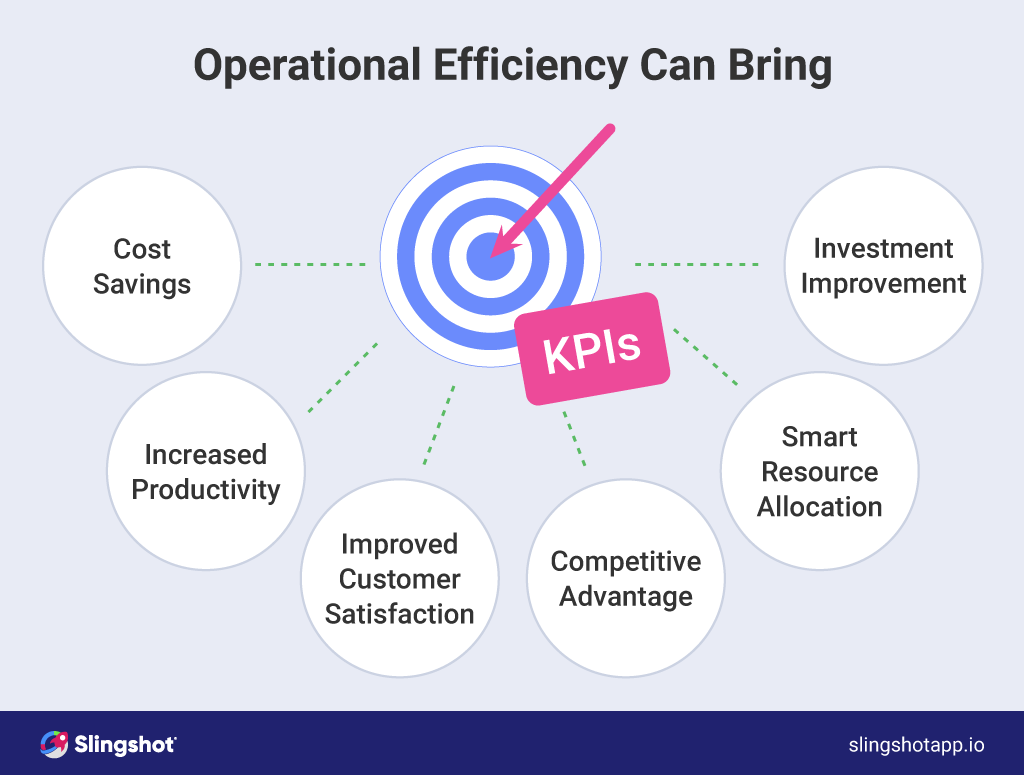
Benefits of Operational Efficiency
Operational efficiency brings many benefits to companies. Since customer demand remains the biggest driver in most fields of business, improving operational efficiency allows your business to remain nimble to changing market needs. Instead of reacting to trends, operationally efficient companies control the conversation and outrun their competition.
So, let’s explore a few of the benefits your company will experience if it invests in operational efficiency.
Higher Customer Retention
Customer retention can increase dramatically. Operationally efficient companies process customers more quickly, serve customers more fully, and fill changing market needs more agilely.
Better Business Agility
Creating adaptable systems, alignment, procedures, and processes is a huge part of operational efficiency. Business agility means supporting work efforts, managing team collaboration better, and using smart decision-making.
Service Expansion
Lowered costs and streamlined operational processes provide room to grow and expand your business services. Operationally efficient companies use data and analysis to pinpoint unmet market needs, create better and expanded services (or products) to meet those needs.
The benefits speak for themselves. But how can you improve your organization’s operational efficiency? Keep reading to find out.
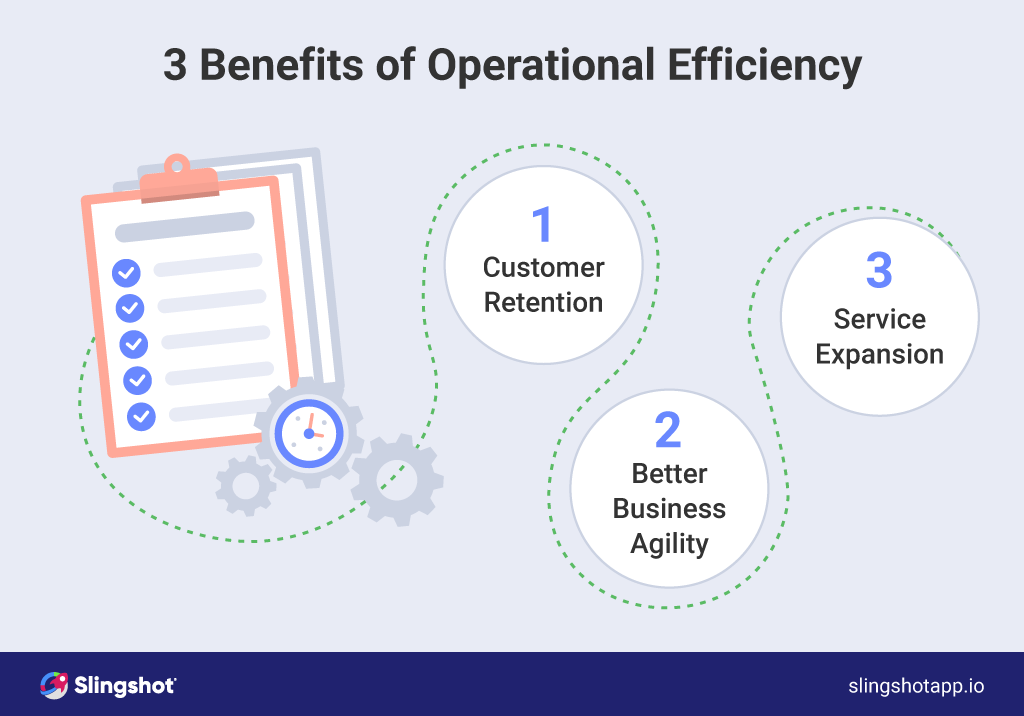
How to Improve Operational Efficiency in 5 Steps
Improving operational efficiency can be a complex and ongoing process, but there are a few key steps that you can take right away to get started.
Identify Areas for Improvement
The first step in improving operational efficiency is to identify areas where the organization is wasting resources or where processes are inefficient. This can be done through data analysis and data visualization, with discussion around the metrics that bring the most insight.
Set Clear Goals and Targets
And align your goals around them. Once you have the end result in mind, operational efficiencies can be found that enable those results. The goals and targets you set should be Specific, Measurable, Achievable, Relevant, and Time-bound (SMART). SMART goals ensure that your organization is focusing on the right improvements and can track its progress. To see how to apply the princples of SMART goals, go to our article here.
Streamline Processes
Once goals and targets have been established, the next step is to identify ways to streamline processes. This can involve reorganizing workflows. Many operational managers employ an all-in-one digital workplace tool that supports many projects tracking and team collaboration with data at the forefront.
Trust Technology
Advances in technology can often help organizations improve operational efficiency. This can include the use of automation, artificial intelligence, and data analytics to streamline processes and save time.
Ongoing Review
It is important to regularly monitor progress toward improving operational efficiency. Achieving remarkable results is NOT a set-it-and-forget-it activity. It requires ongoing adaptation, tweaking, and measurement. Conduct regular assessments of processes and operations and involve your team closely in analyzing these metrics.
How to Measure Operational Efficiency
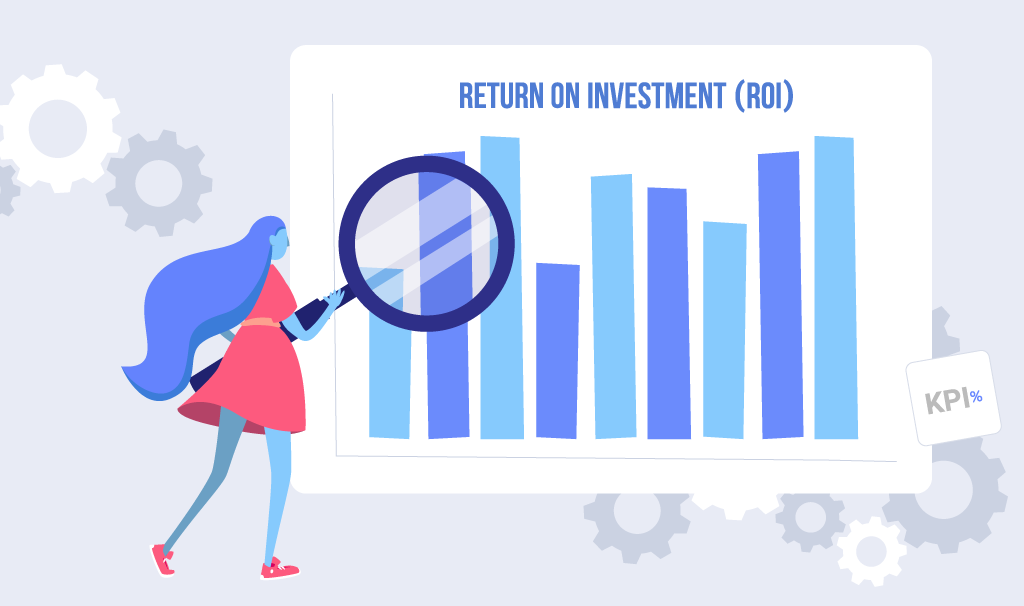
To improve operational efficiency, you need to measure and analyze it regularly. Of course, measuring it depends on the specific goals and objectives of the organization. That said, some common metrics for measuring operational efficiency include:
- Cost per unit: This metric measures the cost of producing each unit of a product or service. A lower cost per unit can indicate that the organization is using its resources more
- Productivity: Productivity measures the output of an organization relative to its input. This can be calculated as the ratio of output to input, or as the total value of output produced per unit of input.
- Throughput time: Throughput time measures the time it takes for a product or service to be produced, from start to finish. A shorter throughput time can indicate that the organization is using its resources more efficiently.
- Return on investment (ROI): ROI measures the profitability of an investment. Investing in internal resources, tools, and software for your teams to use can often directly result in higher profitability.
It is helpful to track a combination of the above metrics to get a more comprehensive and detailed view of your organization’s operational efficiency. One metric may always be a coincidence. Two or more metrics are more valuable for analysis.
One great tool that many operational managers use to measure the things that matter most for their organization is an all-in-one digital workplace. For example, if an organization has goals for improved team collaboration and data analytics, a digital workplace like Slingshot can quickly identify areas for growth. Here’s how:
Streamline Communication and Collaboration
A digital workplace provides a single hub for communication and collaboration, allowing teams to easily share information, work on projects together, and stay up to date on the status of tasks. This can help to improve the efficiency and accountability of workflows and reduce the time and effort needed to complete tasks.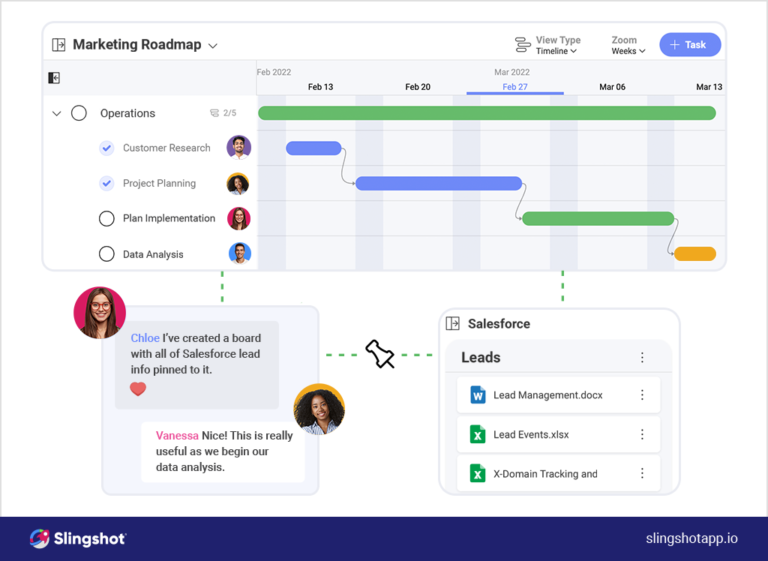
Enhance Data Usage
A digital workplace can provide a central repository for data, allowing teams to easily access and share data as needed. This can help teams to make better-informed decisions and improve the efficiency of their work without switching apps and losing time.
Monitor and Track Progress
A digital workplace can provide tools for tracking and monitoring progress, such as project management software, task tracking, and data analytics. This can help organizations to better understand their operational efficiency and identify areas for improvement.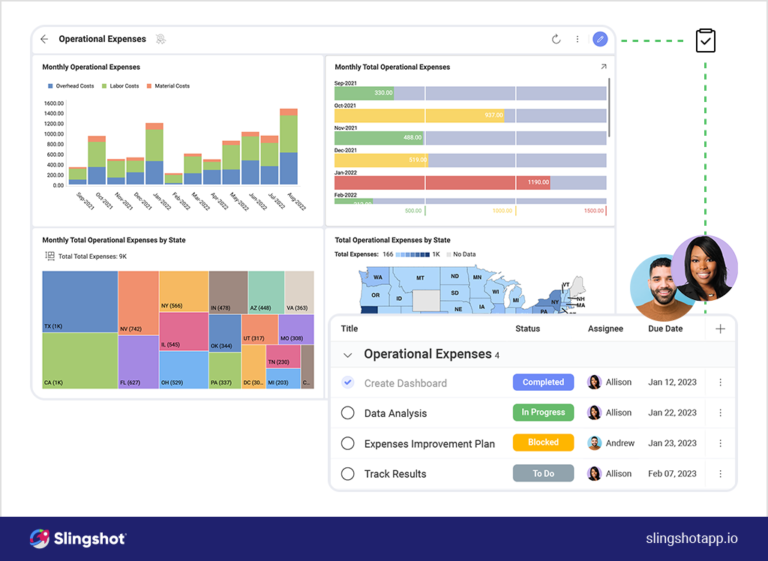
Enhance Security and Compliance
A digital workplace improves security and compliance with tools for managing access to data and documents . This can help protect sensitive data and ensure the organization is operating compliantly.
Slingshot is an all-in-one tool with every feature needed to create an all-around process for improving your organization’s operational efficiency. Start with a free trial and see for yourself.
Related Articles
Ready to grow your business 10x with AI decision-making?
Request a Free Demo of SlingshotSHARE THIS POST







